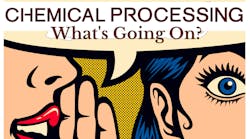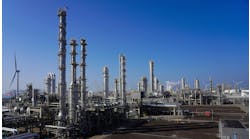[pullquote]
My estimate wasn’t even close. That surprised me because some accounting knowledge from my bookkeeper mother had rubbed off on me. So, I asked for a full breakdown from the bidder, something I had learned to do when managing projects in the Air Force. This revealed higher material costs than those I had used, which were based on old projects. However, that only accounted for part of the deficiency.
My estimate was completed in April. By that time of year, most constructors have a pretty full dance card. Therefore, they probably padded the estimate a little if they already had work lined up. Depending on the expertise needed, all the available labor in a geographical area may get signed up quickly once the ground thaws.
Material costs typically cycle up beginning in March. Starting sooner usually isn’t really an option. Construction is difficult from November through March, sometimes even through May, in cold climates.
Then, there’s the concrete. Once temperatures drop below 40°F, most foundation contractors charge more than double and the risk of failure increases. Freshly poured concrete that freezes can lose up to 50% of its 28-day strength during the critical first four days. Also, nobody really wants to dig a footing in frozen ground, especially because it’s shrunk — what happens when spring comes?
Sometimes, though, work must take place in winter. I once was asked to come up with a way to clean oil tanks in February in Illinois. The cleaning professionals were impressed by my idea of using propylene glycol but they and I knew the cost would be high — about three times the tab of a summer cleanout with water alone.
[callToAction]
Hence, when projects start up in March or April, demand can’t keep up with supply and prices soar. Demand also can impact the price of materials like nickel, copper, palladium or tungsten. A single big project temporarily can corner the market for a material.
Plants in warmer climes also must contend with weather concerns. For instance, construction during hurricane season, which in the northern hemisphere runs from June to November, is a challenge. (For tips on getting ready for hurricanes, see: “Properly Prepare For A Natural Disaster”). Also, refiners on the Gulf Coast and elsewhere avoid shutdowns in the summer because of the high demand for gasoline then, preferring to perform turnarounds in the fall or spring.
Now, let’s consider shipping costs. These have gone up substantially in the past couple of decades. Using U.S. Department of Transportation data and 2.36% average annual inflation from 1990–2018, I found the cost of rail transportation, while pretty much flat during the 1990s, climbed steeply starting in 2005 — increasing by 171% from 2005 to 2018. Truck transportation cost information is spotty but, as of 2018, it cost 15.6¢/ton compared to 5.1¢/ton for rail. Trucking costs likely will rise, e.g., in response to a recent labor rule change reducing driver hours for safety reasons. Air shipment cost runs about 31.5 times that of rail using 2018 numbers.
Shipping during peak times can be expensive. The Christmas holiday season peak is mid-August to mid-October. Container ships are scarce and in demand during this period, which can impact boxed components. Pipe and heavy machinery often are shipped via traditional cargo ships, which costs more.
Given all these complications, let’s consider actions you can take to improve your estimates. First, don’t use material estimates that are older than a decade. Second, break out transportation and other costs to gain insight into them. Avoid factors that can increase costs, e.g., air or truck shipment, transport during peak times, etc.
Stage project items carefully. Maybe it’s less expensive to clean tanks in the winter, despite the high cost, than to create a bottleneck in the spring that could delay a project into the fall. Organizing tie-points more effectively, such as by completing them a year or so ahead of an outage or at a time of year when labor costs are lower, could dramatically reduce project costs. One $800-billion-dollar project I worked on had more than 600 tie-points; imagine if these were done years earlier when the refiner first knew the regulations would come into effect instead of when funding was available. Decisions companies make years before often impact today’s costs.



